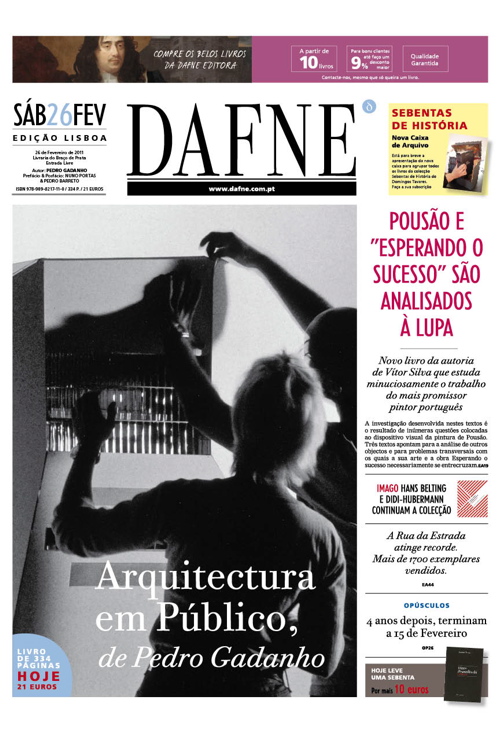This week signals the launch of my “first” book! And the occasion is celebrated with two promising debate panels: today 10pm at Passos Manuel cinema-bar, in Porto; and Saturday 6pm, at the Fábrica Braço da Prata bookshop in Lisbon.
Although by now I’ve produced quite a good number of exhibition catalogues, and even a kind of an experimental monograph, this is actually the first full textbook I bring out – thanks to the commitment and generosity of André Tavares at young but already referential Dafne publishing house.

So, there you are: 334 pages of inquiry into 15 years of key Portuguese daily newspaper Público, so as to reveal how non-specialized mediatization has impacted on the perceptions and directions of contemporary architecture – while all around us starchitecture came to its historical momentum.
The contents of “Arquitectura em Público” reintroduce about a third of my Phd research in full new form. While going into the consequences and benefits of the logic of mass-media for today’s architecture culture, the study provides for a critique of the Portuguese architectural field as it ascended, succeeded and was eventually scrutinized in the public sphere over the last two decades.
You may read here an article in english that embodied three excerts of the original study, while here you may read the book’s Portuguese intro.
 The debates organized on this occasion, on the other hand, are expected to be a real treat on their own merit. For one, they get together some of the crucial protagonists of this particular media story. This is the case of Nuno Portas, my Phd advisor, the well-known urbanist and politician who was also a critic, an editor and a media expert himself, or Paulo Varela Gomes, architectural historian who led a new wave of architectural criticism between the 80s and 90s.
The debates organized on this occasion, on the other hand, are expected to be a real treat on their own merit. For one, they get together some of the crucial protagonists of this particular media story. This is the case of Nuno Portas, my Phd advisor, the well-known urbanist and politician who was also a critic, an editor and a media expert himself, or Paulo Varela Gomes, architectural historian who led a new wave of architectural criticism between the 80s and 90s.
In Porto, Paulo Varela Gomes will be discussing with Jorge Figueira, a contributing critic to Público, and Pedro Machado Costa, who, along with his practice with a.s* atelier de santos, has recently contributed to the debate on the waning of architectural criticism in his blog Quando as Catedrais são Brancas.
In Lisbon, Nuno Portas will be joined by Pedro Barreto, another contributing critic for the Portuguese newspaper, and Isabel Salema, the journalist who for many years took the leading role of bringing architecture to full editorial presence in this specific newspaper.

 Anri Sala, Long Sorrow, 2005. Via
Anri Sala, Long Sorrow, 2005. Via  © Pedro Gadanho, “5.00 am (Hotel room with a view, #12)”, 2011
© Pedro Gadanho, “5.00 am (Hotel room with a view, #12)”, 2011






